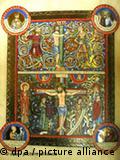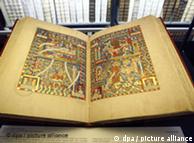
By: Dean Wells
POSTED: May 15, 2008
There hasn’t been anything created like it in over 150 years.
Citing a need from their customer base, Josh and Piper Lindell, owners of Indian Waters Canoe Rental in Tidioute and Allegheny Outfitters in Warren, have developed a river guide book for the Allegheny River that traces the water route from Warren to Tionesta in fine detail.
It’s the first book of its type published in the modern area.
The last time a detailed river guide was published in the area was 1855. “The Allegheny Pilot” chronicles islands, channels and sandbars from Warren to Pittsburgh. It was intended for navigational use by lumber raft and flatboat pilots.
“The Allegheny Pilot” — which is available for viewing online via the Warren Library Association — was made somewhat obsolete by the construction of the Kinzua Dam in the 1960s, which altered water flows and seasonal water depth.
The Lindells published their book last summer — “The Allegheny River Paddling Guide” — with a different target audience in mind.
Gone are the lumbermen and flatboat pilots and crews.
In their place?
Canoeists, kayakers, fishermen and plenty of other people who make the river their summer playground — and are looking for interesting things and places to see and visit.
“The idea for the book definitely started with the customers,” Piper Lindell said. The Lindells purchased Indian Waters near Tidioute in June 2006, then followed up by buying Allegheny Outfitters in Warren that September. “So many people were coming between the two liveries, asking about a guide book. We were certain there was something already out there. There was just nothing. Even the basic watertrail maps didn’t please everyone.”
Enter Piper Lindell’s sister: Tataboline Brant.
Brant was working as a newspaper reporter in Alaska when she made the long trip back to Warren County for a visit. “I came back and Piper said, ‘People are asking for a guide book,’” Brant said.
A decision was made to put a book together.
“We did a big reporting trip from the dam to Indian Waters,” Brant said. “We clocked the river. We took notes on everything we saw.”
They took notes, they took photos. They tried to capture the local flavor the Allegheny River offered in the 45 miles between Warren and Tionesta.
“We were trying to write it in a way of, Let us take you by the arm and show you all the cool stuff in our backyard,” Brant said. “It’s kind of intimidating when you go to a new place and think about checking something out by yourself. We tried to unlock a lot of stuff along the river.”
The Lindells and Brant spent the winter of 2006-2007 doing research for the guide book by reading books about the area, visiting sites online and making trips to the library. They talked to people who canoed the Allegheny for years.
“It was on-the-scene reporting,” Brant said. “It was interviewing with folks, then doing background research on primary sources, books, the Times Observer, the Erie paper — your standard research.”
Piper Lindell began laying out and designing the guide book in January 2007 with a goal of having the book ready in time for the 2007 canoeing season.
It was a process of trial and error.
“We kept coming up with ideas while we worked on it,” Brant said. “We were doing the layout and Josh came up with the idea to include GPS waypoints. So we had to go out and gather those.
“We were really pushing hard to get it out by the next season,” Brant said. “We really wanted it to be there. Our customers were expecting it, so we were really under the gun.”
At one point, the Lindells and Brant were forced to redo the entire layout of the book after discovering how much it would cost to print a laminated waterproof edition.
“We didn’t want to reduce the quality, but we wanted to make it affordable,” Brant said. “We couldn’t have a book that cost people $50.”
“It’s so durable,” Piper Lindell said of the laminated final product. “It will last years and years and years.”
The book was completed and 500 copies were printed by an Erie company in the summer of 2007.
The final spiral-bound product contains 34 pages of major landmarks, historical sites, places to stop for food, supplies, camping, hiking, etc. Each feature is marked on a detailed topography map.
“The feedback has been awesome,” Brant said.
“I’ve had some people who bought the book who have been canoeing for the last 15 years who have said to me, ‘I never knew these things were along the river,” Piper Lindell said.
According to Brant, they tried to include as many businesses as possible in the guide book in lieu of mentioning paid advertisers to give the book a more complete feel.
“Where we put opinions in, we tried to make it transparent,” Piper Lindell said. “We’d write things like, ‘Oh, we like the steak sub here — but you can also get this and that here and here.”
The guide book has already started making an impact on local businesses.
“I was talking to (Warren Main Street manager) Chris Cheronis recently,” Piper Lindell said. “She told me that there was a group of canoers in Snuffy’s Cafe last year. The owner started talking to them and asked where they came from, how did they get (to Snuffy’s). They said, ‘Oh, this guide book.’”



 This 800 year old book was hand drawn by the monks of the Benedictine monastery Helmarshausen and it includes all four of the Bible's Holy Gospels on 226 parchment pages.
This 800 year old book was hand drawn by the monks of the Benedictine monastery Helmarshausen and it includes all four of the Bible's Holy Gospels on 226 parchment pages.





















